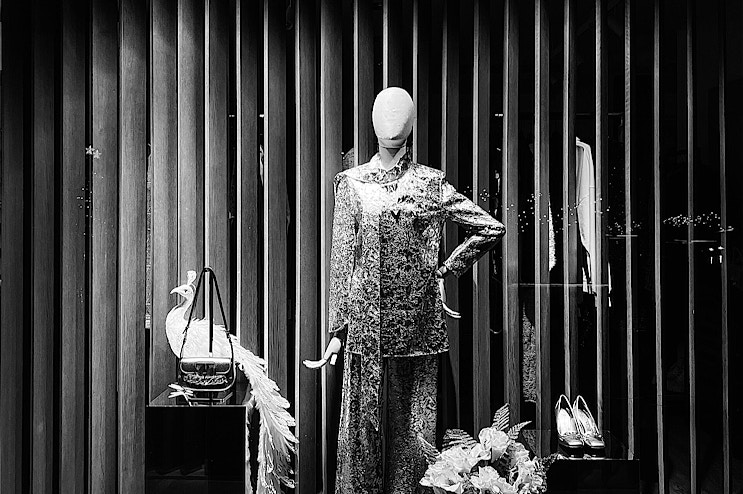In retail, introducing new products is a key opportunity to attract customers' attention and boost sales. A well-curated and strategic display can turn a simple product into a true centerpiece of the sales space, enhancing its features and sparking the customer’s curiosity. This is where visual merchandising comes into play, a discipline that combines aesthetics, strategy, and psychology to maximize the impact of products on buyers.
Let’s explore how to best plan visual merchandising strategies to showcase new products, creating an engaging and memorable shopping experience.
1. Identifying Goals and Managing Communication
To best highlight new items, it's essential to set clear goals that will guide the entire visual merchandising strategy. This means defining which aspects of the product to emphasize: some of its more distinctive features, its ability to meet a specific need, or its connection to market trends. This approach allows for designing displays that capture the customer's attention and effectively highlight the product.
Communication plays a crucial role in reinforcing the visual message, both within the store and online. From the wording on signage to the materials used for displays, every element should immediately convey the product's value. Additionally, using digital channels, such as social media or websites, amplifies the visibility of new items, creating a direct connection with the audience and reinforcing the consistency between the physical and digital experience.
2. Strategic Placement Inside the Store
The placement of new products is critical for maximizing their visual impact and stimulating customer interest. These items should be positioned in high-traffic areas of the store, such as the entrance or main aisles.
To make placement even more effective, it's useful to integrate elements that capture attention and guide the eye toward the new products:
- Direct Lighting: A focused light, with warm or cool tones depending on the desired effect, separates the product from the rest of the space and highlights it.
- Theatrical Structures and Supports: Slanted tables, decorative shelves, or pedestals immediately draw attention.
- Visible Signage: Arrows, symbols, or messages encourage customers to approach, making the new products easy to identify.
3. Telling the Product's Story
An effective display must highlight the product through a narrative that grabs the customer's attention: visual storytelling turns initial interest into deeper engagement, presenting the product as part of an experience or emotional context.
This narrative can be created with:
- Authentic Stories: Telling stories about the brand, materials, or creative process that add perceived value to the product.
With well-crafted storytelling, new items become the centerpiece of the shopping experience, helping customers view them as choices that enrich their daily lives. - Thematic Settings: Recreating real-life situations where the product can be used, making it immediately more relevant.
- Emotional Messages: Communicating the product's value with words that inspire and convey a personal meaning.

4. Eliciting Emotion in the Customer
Creating an emotional connection with the customer is key to showcasing new products. A shopping experience that involves the senses and triggers specific emotions helps establish a bond between the customer and the product, creating a lasting impression. Emotional communication plays a key role in this process: captivating visual messages, color tones that evoke positive feelings, and evocative settings contribute to creating an atmosphere that inspires the customer and guides them toward the product.
The use of technology, integrated thoughtfully and consistently, can amplify this experience. Tools like interactive screens, demonstration videos, and digital installations allow customers to explore the product more dynamically and engagingly.
The goal is to turn the simple act of purchasing into a memorable moment, where the customer feels inspired and motivated to choose a product they perceive as special and meaningful.
5. Integration with Existing Products
Integrating new products with those already in-store is an important art to master to encourage purchases. Placing new items next to bestsellers or complementary products allows the customer to envision how different items can be used together. For example, an accessory can be paired with the clothing it complements in the display, or an innovative product can be shown alongside a classic, conveying a sense of continuity.
The effectiveness of this strategy depends on how the display spaces are organized: the products should be arranged neatly and be easily accessible.
Stands, display units, and shelves play an important role, but the real added value lies in creating visual contexts that inspire the customer. For example, a mannequin dressed in a complete outfit or a window display featuring coordinated items for practical use sparks more interest than a shelf with generic options.
Visual presentations that suggest real combinations make the shopping experience more intuitive and engaging.
6. Rotating Displays
Regularly updating displays is essential for maintaining customer interest and highlighting new products. A regular rotation, which can occur weekly or monthly, refreshes the store’s image and piques curiosity. Changing themes, colors, or the arrangement of items allows products to be presented in a new light, increasing their appeal for visitors to the store.
To ensure effective results, each update must maintain both visual and functional consistency. Items should be arranged in an orderly manner, in spaces that highlight their features and make them easy to access.
The atmosphere can also be refreshed with small scenic adjustments: using thematic decorations, such as candles for a winter display or fresh, bright colors for a summer setup, adds dynamism and contributes to creating a more immersive experience.

7. Free Access to Products
The tactile experience is a key element in engaging customers and shortening the gap between them and the brand. Allowing customers to touch and interact with products enables them to assess quality, materials, and details, fostering a more direct and personal connection. This connection is particularly important for items distinguished by craftsmanship, unique textures, or innovative materials.
Even simple details, like free access to shelves or displays in easily reachable areas, promote interaction and stimulate curiosity. Customers appreciate the opportunity to discover products on their own, examining their features without physical or perceptual barriers. This transparency creates a welcoming environment and increases the likelihood of a satisfying purchase.
Interactivity, which is becoming increasingly central in visual merchandising, adds value to the shopping experience. Spaces that allow customers to try a product or participate in hands-on demonstrations enhance their confidence. For example, areas dedicated to trying on clothing, technological tools that simulate product use, or interactive experiential corners actively engage visitors.
The Secret to a Successful Visual Merchandising Strategy: Giving Space to Creativity
An effective visual merchandising strategy is based on planning and clear goals, but creativity is what makes the difference. Originality in displays, the ability to surprise customers, and the use of innovative solutions transform a sales space into an engaging and memorable environment. Allowing creativity to shine means experimenting with new combinations, colors, materials, and narrative elements that make the shopping experience unique.
At the heart of every visual merchandising success is an approach that combines strategy, emotion, and imagination. When creativity and professionalism meet, the result is a shopping experience that wins the customer’s heart and makes every new product unforgettable.
If you want to apply these strategies in your store, explore our VIME Master or request a consultation!






